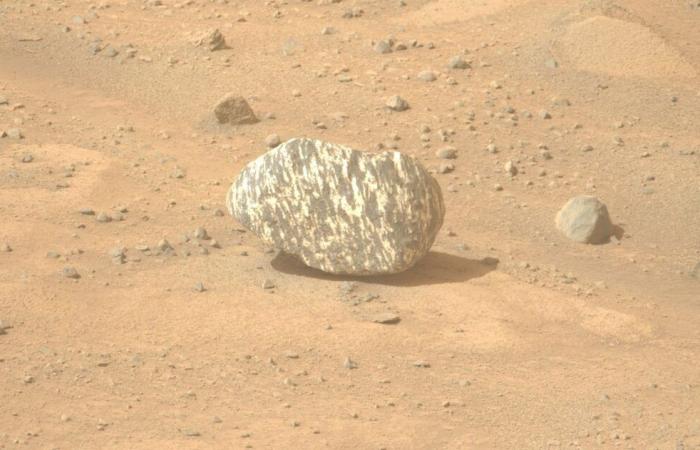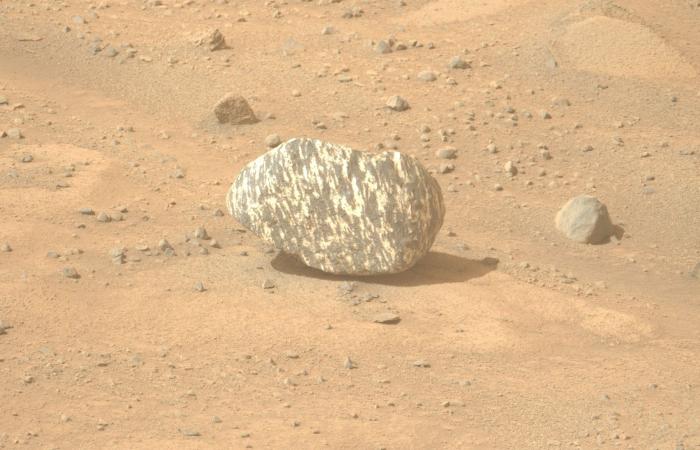During his explorations in the Jezero crater on Marsthe rover Perseverance of the NASA recently made an intriguing discovery: a striated rock called Freya’s Castle.
This geological formation is distinguished from other Martian rocks by its particular characteristics, observed along the inner slopes of the crater, where the rover has been operating since February 2021. The first analyzes suggest that the rock could have a volcanic or metamorphic, resulting from high temperature and pressure processes. The Freya’s Castlea formation approximately 20 cm in diameter, presents a still unclear chemical composition.
However, the multispectral images captured by the system Mastcam-Z of the rover have provided some clues.
According to Athanasios Klidarasdoctoral student in planetary sciences atPurdue Universityigneous or metamorphic processes could be the cause of the streaks observed on the rock surface.
Despite the interest aroused by this discovery, Perseverance had to continue its mission without being able to carry out additional analyzes on the Freya’s Castle.
Researchers hope that future investigations in this area may reveal other similar rocks to study in more depth. In addition to the discovery of Freya Castle, in May 2024, Perseverance documented a field of rocks known as Mont Washburnalso located inside Jezero Crater.
In this area, the rover identified a bright, speckled rock, called Again Pointmeasuring approximately 45cm x 35cm. The analyzes carried out with the instruments Mastcam-Z et SuperCam (the latter capable of vaporizing and analyzing the surface material using a laser beam) revealed that Again Point is mainly composed of pyroxene and feldspar, minerals commonly present in volcanic and metamorphic rocks also on Earth. These discoveries are part of the fourth scientific campaign of Perseverancemainly aiming to identify carbonate and olivine deposits along a geological formation called Marginal Unitlocated on the walls of the crater and approximately 45 km wide.
Carbonates, like limestone, are thought to have formed during Mars’ ancient past, when the climate was warmer and humid.
Such discoveries have been rare until now, making research in this area particularly significant.
Olivine, on the other hand, is more common and is often associated with the presence ofeau in the past of Mars. By crossing the walls of Jezero craterPerseverance could encounter outcrops crucial to understanding Martian geological history. Scientists hope to find rock formations that formed between 3 and 3.7 billion years ago, following the impact which gave birth to the Jezero crater, thus opening a valuable window on the history of water on Mars.
Our Meteo Giornale articles are on Google News, follow us for free!


Follow our feed!








